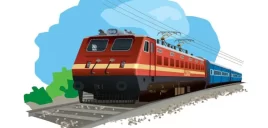These empty or water-filled tankers or other wagons are known as ‘guard wagons’ and are intended to provide a safety buffer for the tankers carrying inflammable cargo. They are intended to take the brunt of any minor collision so that the tankers carrying the inflammable substances are not themselves damaged leading to possible explosions or major fires. At the head of the rake, next to the loco, another reason for providing guard wagons is to prevent inflammable vapours from the tankers from catching fire either from the hot diesel exhaust from the loco, or sparks at the pantograph from electric locos.
Source – IFRCA.org
Disclaimer: The Information /News /Video provided in this Platform has been collected from different sources. We Believe that “Knowledge Is Power” and our aim is to create general awareness among people and make them powerful through easily accessible Information. NOTE: We do not take any responsibility of authenticity of Information/News/Videos.
This entry was posted in 2 Railway Employee, STUDY NEW, Railway Employee











